Explore Shigatse - Tibet Travel, Asia
As Tibet’s second-largest city, Shigatse offers a unique blend of historical significance and natural beauty, making it a must-visit for those exploring the region. Shigatse, located in the heart of Tibet, is a fascinating place that fascinates visitors with its rich cultural traditions and breathtaking scenery. Known for its ancient monasteries, vibrant local culture, and proximity to the majestic Himalayas, Shigatse provides a truly immersive experience into Tibetan life. Whether you're a history enthusiast, a cultural explorer, or simply seeking breathtaking views, Shigatse has something to offer.
Population: Approximately 800,000 in 2020.
Economy: Shigatse's economy is driven by agriculture, animal husbandry, and tourism. Key industries include barley farming, yak herding, and the production of traditional Tibetan handicrafts and goods.
Landmarks: Famous for the Tashilhunpo Monastery, Shigatse Dzong, and the Yungdrung Ling Monastery.
Tibet
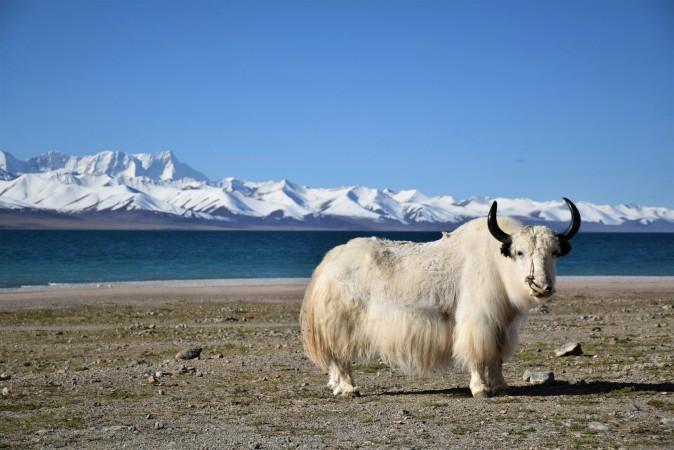
Overview of Shigatse
History & Cultural Influence
Shigatse's history has a strong and unseparated connection to Tibetan culture and religion. As the former seat of the Panchen Lama, Shigatse has long been a spiritual center, home to the revered Tashilhunpo Monastery. Founded in the 15th century by the first Dalai Lama, this monastery stands as a testament to the city's religious heritage and offers visitors a glimpse into the rich traditions of Tibetan Buddhism. The city's history is not only shaped by its monasteries but also by its role in Tibetan politics and trade. Once a key stop on the ancient trade routes connecting Tibet with Central Asia, Shigatse has been a melting pot of cultures and influences for centuries.
Interaction with The Locals
Shigatse, Tibet's second-largest city, has a population of approximately 800,000 residents. The city's population is a vibrant mix of Tibetan ethnic groups, with the majority being Tibetan Buddhists who follow traditional practices and customs. The local population is known for their warmth and hospitality, making visitors feel welcome as they explore the rich cultural and historical tapestry of Shigatse.
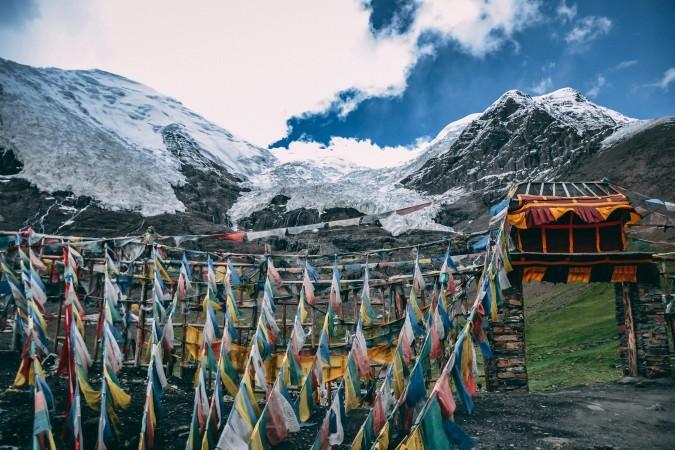
Buddhist Flags outside a monastery in Shigatse - © Daniele Salutari
Top Attractions in Shigatse
Tashilhunpo Monastery
Founded by the first Dalai Lama in 1447, Tashilhunpo Monastery is one of Tibet’s largest and most important monasteries. It serves as the traditional seat of the Panchen Lama, one of the highest-ranking lamas in Tibetan Buddhism. The monastery complex is renowned for its striking architecture, including the vast assembly hall adorned with intricate murals and thangkas (traditional Tibetan scroll paintings).
Shigatse Dzong
Perched on a hill overlooking the city, Shigatse Dzong is a historic fortress that once served as a military stronghold and administrative center. Built in the 15th century, the dzong offers panoramic views of Shigatse and the surrounding landscape. The fortress’s architecture is a blend of Tibetan and Chinese styles, reflecting its strategic importance and the diverse influences on the region.
Mount Everest Views
For those seeking unparalleled natural beauty, the Rongbuk Monastery area, located a few hours from Shigatse, offers breathtaking views of Mount Everest. The monastery, located at an elevation of around 5,000 meters, provides a vantage position for seeing the world's tallest mountain. The journey to Rongbuk is an adventure in itself, taking you through rugged terrain and offering scenic vistas of the Tibetan Plateau.
Yungdrung Ling Monastery
Situated about 20 kilometers from Shigatse, Yungdrung Ling Monastery is an important center of Bon Buddhism, an ancient pre-Buddhist spiritual tradition of Tibet. The monastery, founded in the 10th century, is renowned for its unique Bon religious artifacts and practices. Visitors can explore its intricate murals depicting Bon cosmology, participate in traditional rituals, and learn about the Bon religion’s distinct teachings.
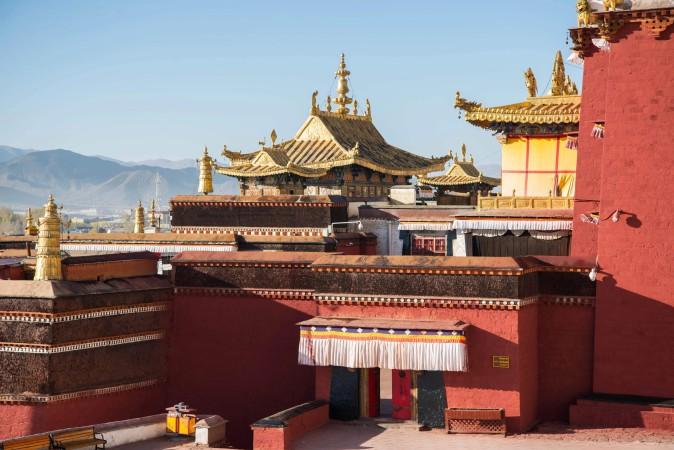
Tashilhunpo Monastery - © Hindustan Times
Must-Try Dishes in Shigatse
Exploring Shigatse is not complete without indulging in its unique culinary delights. Tibetan cuisine offers a variety of flavors that reflect the region's harsh climate and cultural traditions.
- Tsampa: A staple in Tibetan diets, Tsampa is roasted barley flour mixed with butter tea or water to form a dough-like consistency. It's a nutritious and filling dish, often enjoyed for breakfast or as a quick snack during long journeys.
- Momos: These Tibetan dumplings are a popular treat in Shigatse. Filled with minced meat (usually yak or beef) or vegetables, momos are steamed or fried and served with a spicy dipping sauce. They're a must-try for anyone visiting the region.
- Yak Meat: Known for its rich flavor and tender texture, yak meat is a local specialty. It’s commonly prepared as stews, kebabs, or stir-fried dishes. Sampling yak meat dishes provides a true taste of Tibetan cuisine.
- Butter Tea: This traditional Tibetan drink is prepared with tea leaves, yak butter, and salt. It is known for its rich, creamy texture and is considered a symbol of Tibetan hospitality.
- Thukpa: A hearty noodle soup, Thukpa is made with meat or vegetables, and seasoned with Tibetan spices. It's perfect for warming up after a day of exploring Shigatse’s cold, high-altitude environment.
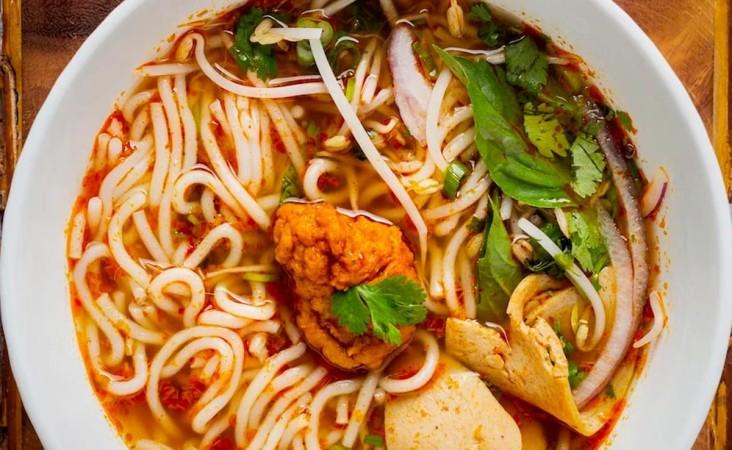
Thukpa - © NDTV Food
Festivals & Local Celebrations
Saga Dawa Festival
Saga Dawa is one of Tibet's most significant religious festivals, celebrated annually in May or June. It commemorates the three major events in the life of the Buddha: his birth, enlightenment, and death. The festival is marked by elaborate ceremonies, including the circumambulation of sacred sites and the offering of prayers. Pilgrims from all over Tibet gather in Shigatse to participate in ritual activities, make offerings, and engage in acts of charity. The streets come alive with vibrant processions, traditional music, and dance performances, creating a deeply spiritual and communal atmosphere.
Shigatse Horse Racing Festival
The Shigatse Horse Racing Festival takes place in August and is a highlight of the Tibetan cultural calendar. This festival celebrates Tibetan equestrian skills with thrilling horse races that attract participants and spectators from across the region. The event features various races, including traditional horse races and local games. In addition to the races, the festival includes colorful parades with traditional costumes, music, and dance performances that showcase Tibetan culture and heritage. It’s a lively and exhilarating event that offers a glimpse into the region’s passion for horsemanship and community spirit.
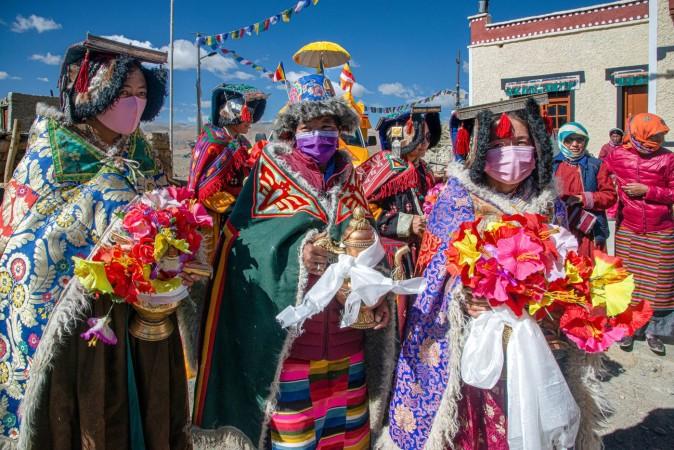
Saga Dawa Festival - © People's Archive of Rural India
What to Do in Shigatse
- Trekking Mount Everest: The region surrounding Shigatse provides excellent opportunities for trekking and hiking. Trails offer stunning views of the Himalayas and the Tibetan Plateau. Popular trekking routes include those around Mount Everest and the scenic paths near the Rongbuk Monastery.
- Cultural Tours: Guided tours of Shigatse’s historical sites, including the Tashilhunpo Monastery and Shigatse Dzong, offer insights into Tibetan history and religious practices. These tours are ideal for those interested in learning more about the region’s cultural heritage.
- Monastery Tours: Visiting local monasteries such as Tashilhunpo and Yungdrung Ling provides an opportunity to witness Tibetan Buddhist rituals and experience the serene environment of these spiritual centers.
- Explore Local Markets: Shigatse's lively marketplaces provide tourists the opportunity to purchase traditional Tibetan crafts, jewelry, and souvenirs. The markets are also a great place to sample local food and interact with residents.
Shopping in Shigatse
- Traditional Crafts Stores: The city is renowned for its traditional Tibetan crafts, including handwoven carpets, Thangka paintings, and intricate jewelry. These items make for memorable keepsakes and are often available in local markets and specialty shops.
- Shigatse Local Markets: Shigatse’s markets are a hub of activity and offer a variety of goods. The bustling atmosphere provides an authentic shopping experience, with stalls selling everything from Tibetan clothing and textiles to local snacks and spices.
- Souvenir Stores: Visitors can purchase a variety of Tibetan souvenirs, such as prayer flags, traditional masks, and handicrafts. These items are often handcrafted and reflect the region’s cultural heritage.
- Pottery Shops: Local artisans produce beautiful handmade pottery, which is a popular choice for visitors looking to take home a piece of Tibetan artistry.
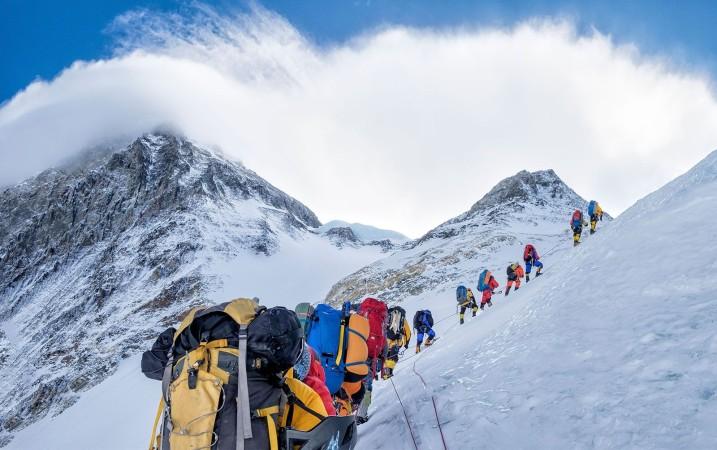
Trekking Mount Everest - © Britannica
Weather in Shigatse: Best Time to Visit
Spring in Shigatse
Spring in Shigatse is a pleasant time to visit, with temperatures ranging from 10°C to 20°C (50°F to 68°F). The weather is generally mild and dry, making it ideal for outdoor activities and exploring historical sites. However, evenings can be chilly, so it's advisable to bring warm layers.
Summer in Shigatse
Summer temperatures in Shigatse typically range from 15°C to 25°C (59°F to 77°F). This is the peak tourist season due to the favorable weather conditions, characterized by clear skies and abundant sunshine. Rainfall is minimal, but occasional thunderstorms can occur. It's a great time for trekking and sightseeing.
Autumn in Shigatse
Autumn brings cooler temperatures, ranging from 5°C to 15°C (41°F to 59°F). The weather is generally dry and crisp, with stunning clear skies and vibrant fall colors. It's an excellent time for photography and outdoor exploration, but temperatures can drop significantly at night.
Winter in Shigatse
Winters in Shigatse are cold, with temperatures often falling below freezing, ranging from -10°C to 5°C (14°F to 41°F). Snow is common, and the city can be covered in a picturesque blanket of white. While winter offers a serene and beautiful landscape, it can be challenging for outdoor activities due to the cold temperatures. Proper winter clothing and preparation are essential if visiting during this season.
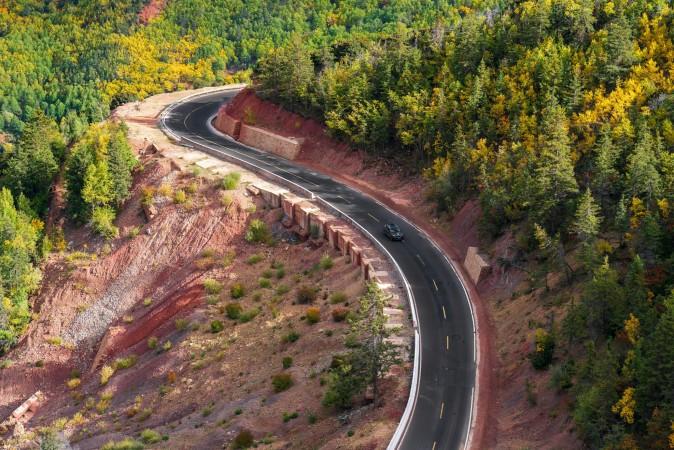
Admire the natural beauty along your exploration trail - © ダモ リ(darmau)
Essential Travel Information
Getting Around Shigatse
- Local Buses: Shigatse has a network of local buses that provide affordable transportation within the city. These buses are a convenient option for short distances and exploring various parts of Shigatse.
- Taxis: Taxis are commonly accessible in Shigatse and provide a more pleasant mode of transportation. They are suitable for visitors who prefer a private mode of transport and can be hired for both short trips and day-long excursions.
- Bicycles and Motorbikes: Renting bicycles or motorbikes is a popular way to explore Shigatse and its surroundings at your own pace. This option provides flexibility and the opportunity to enjoy the scenic beauty of the Tibetan Plateau.
ATM & Banking Services
Shigatse provides various ATM and banking services to meet travelers' needs. ATMs are conveniently located throughout the city, especially in central areas and near major hotels, allowing for cash withdrawals in local currency (Tibetan Yuan) with most international bank cards. Banking services are available at multiple banks in the city, offering currency exchange, cash deposits, and account management. While credit cards are accepted in larger establishments like hotels and restaurants, smaller shops and areas away from the city center may require cash transactions.
Where to Stay in Shigatse
- Luxury Hotels: For those seeking high-end comfort and amenities, luxury hotels in Shigatse provide elegant rooms, fine dining, and top-notch services. These accommodations often feature stunning views of the surrounding landscape and offer a range of upscale facilities.
- Mid-Range Hotels: Travelers looking for a balance between comfort and affordability will find several mid-range hotels in Shigatse. These hotels offer clean, well-equipped rooms and convenient amenities, ensuring a pleasant stay without breaking the bank.
- Guesthouses and Hostels: Budget-conscious visitors can choose from guesthouses and hostels that provide basic facilities at an economical price. These options are ideal for travelers who want to save on accommodation while still enjoying a comfortable stay and the opportunity to meet fellow travelers.
- Homestays: For a more immersive experience in Tibetan culture, homestays offer the chance to stay with local families. This option provides a unique insight into daily Tibetan life and traditional hospitality, making it a memorable choice for those looking to connect with the local community.
Des articles pour vous

Voyage à Kampong Cham - Cambodge, Asie
Kampong Cham est une charmante ville riveraine située le long du fleuve Mékong. Connue pour son importance historique et ses attractions culturelles, Kampong Cham offre un mélange d'architecture coloniale, de temples anciens et de paysages pittoresques. Kampong Cham est reliée au district voisin de Tbong Khmum par le pont Kizuna, le premier pont au Cambodge à traverser le fleuve Mékong, en faisant un carrefour de transport crucial pour la région.
Population : Estimation de 80 000 habitants (en 2024)
Économie : Bien que n'étant pas encore une destination touristique majeure, Kampong Cham propose des sites culturels et historiques, tels que le temple Wat Nokor et le pont en bambou de Koh Pen, ainsi que des attractions naturelles comme des forêts et des chutes d'eau. Le gouvernement se concentre sur le développement du tourisme pour améliorer l'économie locale.
Points d'intérêt : Wat Nokor Bachey, Phnom Han Chey, Phnom Pros et Phnom Srey, pont en bambou de Koh Pen, Wat Joy T'maw, Preah Theat Teuk Chha, piste d'atterrissage abandonnée de l'US.

Explorez Nha Trang - Voyage au centre du Vietnam, Asie
Nichée le long de la magnifique côte du Vietnam, Nha Trang se distingue comme une destination de premier choix pour les voyageurs. Cette ville côtière, réputée pour ses superbes plages et sa vie marine foisonnante, s'adresse à tous. Nha Trang vous accueille à bras ouverts, que vous recherchiez des aventures, de la culture ou de la détente au bord de la mer. Ce guide vous fera découvrir les points forts de cet endroit magnifique, facilitant ainsi la planification de votre voyage de manière fluide et excitante.
Population : Environ 423 000 habitants en 2019.
Économie : L'un des principaux centres touristiques du Vietnam et la plus grande économie de la province de Khanh Hoa.
Sites emblématiques : Célèbre pour les tours Cham de Po Nagar, la cathédrale de Nha Trang et l'île Hon Mun.

Voyage à Sihanoukville - Cambodge, Asie
Sihanoukville, une ville côtière du sud-ouest du Cambodge, est la capitale de la province de Preah Sihanouk. Située sur une péninsule le long du golfe de Thaïlande, la ville est bien reliée à Phnom Penh par des autoroutes principales et dispose d'un aéroport international.
La ville abrite le seul port en eau profonde du Cambodge, jouant un rôle crucial dans la logistique et le commerce du pays. Les plages magnifiques de Sihanoukville, telles qu'Ochheuteal et Serendipity, attirent aussi bien les touristes nationaux qu'internationaux. Le développement économique a prospéré ces dernières années, en particulier grâce à la création de la Zone économique spéciale de Sihanoukville (SSEZ) et aux investissements chinois dans les casinos, l'immobilier et les stations balnéaires. La ville offre également des attractions naturelles telles que le parc national de Ream et plusieurs îles voisines, en faisant une destination variée pour les voyageurs d'affaires et de loisirs.
Population : La population de Sihanoukville était d'environ 160 000 habitants en 2024.
Économie : Sihanoukville, une ville côtière en pleine croissance au Cambodge, se distingue par son mélange dynamique de développement économique et de tourisme. La Zone économique spéciale de Sihanoukville (SSEZ) est devenue un pôle industriel majeur, abritant plus de 180 entreprises et créant des milliers d'emplois. Avec le seul port en eau profonde du Cambodge, la ville joue un rôle clé dans le commerce et la logistique du pays. Bien qu'elle se soit transformée d'une petite ville balnéaire tranquille en un centre urbain animé, Sihanoukville reste célèbre pour ses plages immaculées, attirant des touristes tout au long de l'année. Les investissements chinois importants ont alimenté la croissance des hôtels, des casinos et de l'immobilier, faisant de la ville un centre d'opportunités économiques et d'hospitalité.
Monuments : Plage d'Otres, Plage d'Ochheuteal, Plage de l'Indépendance, Parc national de Ream, Chute d'eau de Kbal Chhay, Monument des Lions d'Or, Wat Leu.

Explorez Kharkhorin - Voyage en Mongolie, Asie
Bienvenue à Kharkhorin, un trésor historique niché au cœur de la Mongolie. Ancienne capitale vibrante de l'Empire Mongol sous le légendaire Gengis Khan, Kharkhorin se dresse comme un témoignage de la riche culture et de l'histoire de la Mongolie. Cette ville antique possède une combinaison unique d'importance historique et de paysages époustouflants, en faisant une destination incontournable pour un voyage de rêve en Mongolie. En mettant le pied à Kharkhorin, vous ferez un saut dans le temps, à une époque de grands palais, de routes commerciales prospères et d'échanges culturels sans pareils. Que vous soyez intrigué par les ruines anciennes, désireux d'explorer les traditions locales ou simplement en quête d'une immersion dans la beauté naturelle de la Mongolie, Kharkhorin a quelque chose à offrir à chacun.
Population : Environ 1 000 habitants en 2020.
Économie : L'une des attractions touristiques les plus importantes de la Mongolie et l'ancienne capitale de l'Empire Mongol.
Monuments : Célèbre pour les Ruines de Kharkhorin, le Monastère d'Erdene Zuu, et la Vallée d'Orkhon, un site du patrimoine mondial de l'UNESCO.

Explore Luang Prabang - Laos Travel, Asia
Luang Prabang, nestled in northern Laos at the meeting point of the Mekong river and Nam Khan river, is a city celebrated for its rich cultural heritage and stunning natural beauty. Recognized as a UNESCO World Heritage Site in 1995, it boasts a unique blend of traditional Lao and French architecture that has been carefully preserved. Whether you're wandering through its ancient temples, admiring the local architecture, or soaking in the natural beauty of waterfalls and rivers, Luang Prabang offers something for everyone.
Population: Approximately 470,000 in 2020.
Economy: Luang Prabang's economy thrives on tourism, with its UNESCO status drawing visitors to its temples, natural wonders, and cultural experiences. Local crafts, hospitality, and small businesses also play vital roles, supporting the town's sustainable growth. Local crafts, hospitality, and small businesses also play vital roles, supporting the town's sustainable growth.
Landmarks: Famous for the Wat Xieng Thong, Royal Palace Museum (also known as Haw Kham), and Mount Phousi (Phou Si Hill).Luang Prabang, nestled in northern Laos at the meeting point of the Mekong river and Nam Khan river, is a city celebrated for its rich cultural heritage and stunning natural beauty. Recognized as a UNESCO World Heritage Site in 1995, it boasts a unique blend of traditional Lao and French architecture that has been carefully preserved. Whether you're wandering through its ancient temples, admiring the local architecture, or soaking in the natural beauty of waterfalls and rivers, Luang Prabang offers something for everyone.
Population: Approximately 470,000 in 2020.
Economy: Luang Prabang's economy thrives on tourism, with its UNESCO status drawing visitors to its temples, natural wonders, and cultural experiences. Local crafts, hospitality, and small businesses also play vital roles, supporting the town's sustainable growth. Local crafts, hospitality, and small businesses also play vital roles, supporting the town's sustainable growth.
Landmarks: Famous for the Wat Xieng Thong, Royal Palace Museum (also known as Haw Kham), and Mount Phousi (Phou Si Hill).

Explore Vientiane - Laos Travel, Asia
Vientiane, the capital of Laos, offers a unique travel experience for those looking to explore a peaceful Southeast Asian city with a deep connection to its cultural roots. Unlike other bustling capitals, Vientiane boasts a serene and laid-back atmosphere, making it a perfect destination for travelers wanting to escape the chaos of more crowded cities. This charming city sits along the Mekong River, offering scenic views, rich history, and a vibrant yet tranquil way of life. As a gateway to exploring Laos, this capital invites you to slow down, immerse in its heritage, and enjoy the local flavors.
Population: Approximately 840,000 in 2023.
Economy: Vientiane's economy is growing steadily, driven by government services, trade, and tourism. Key sectors include agriculture, manufacturing, and construction. The city's strategic location along the Mekong River supports trade with neighboring Thailand and Vietnam.
Landmarks: Famous for the Pha That Luang, Patuxai, and the Buddha Park (or Wat Xieng Khuan).
